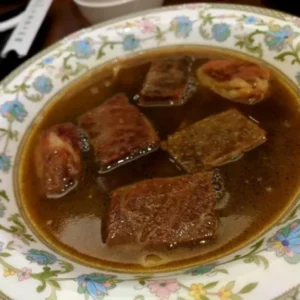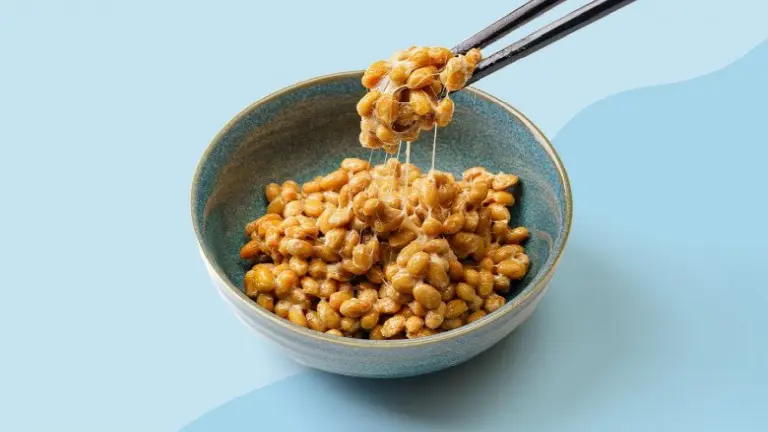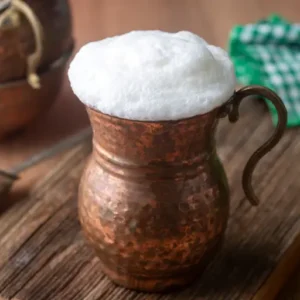Imagine sitting down to a meal that smells unmistakably like a public restroom. You pinch your nose, shut your eyes, and take the first bite. For most people, this sounds like a culinary nightmare—but in South Korea, it’s a national delicacy. Welcome to the bizarre world of Hongeo—a fermented skate dish that’s both reviled and revered.
What Is Hongeo?
Hongeo (홍어) is a traditional Korean dish made from fermented skate, a type of bottom-dwelling fish closely related to rays. What sets this fish apart is that, unlike most animals, skates don’t urinate. They have no bladder or kidneys. Instead, they expel waste—especially uric acid—directly through their skin.
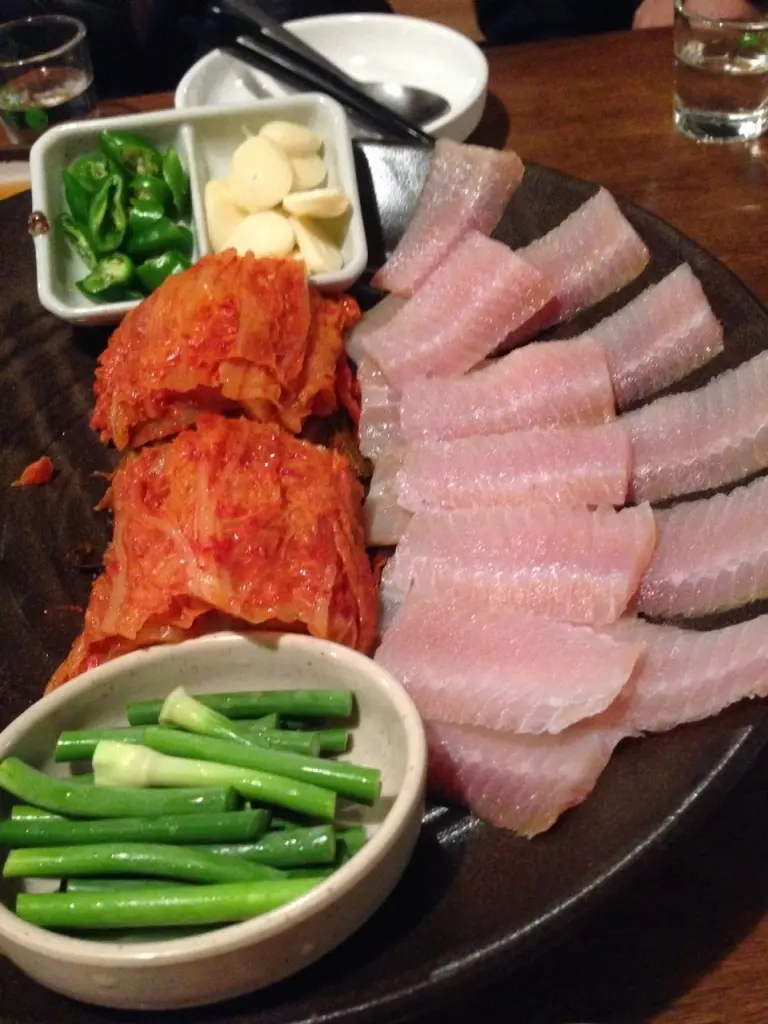
>> The most bizarre dishes on the planet that only the brave dare to eat
When the skate is fermented, this uric acid transforms into ammonia, giving Hongeo its infamously strong and pungent odor—one that has been compared to urine or a filthy toilet. The smell is so overwhelming that many first-timers eat it with their eyes closed and their noses pinched. But beneath that harsh aroma lies a surprisingly rich and flavorful meat that seafood lovers can’t get enough of.
A Dish Born of Necessity and History
Hongeo has deep historical roots. It’s believed to have originated in the 14th century, when Japanese pirates invaded Korea’s southern coast, forcing residents of Heuksan Island to flee inland along the Yeongsan River. To preserve their food during the journey, locals allowed fish to ferment naturally—leading to the accidental discovery of Hongeo.
Over the centuries, the dish became a regional specialty in Korea’s southwestern provinces, especially in Jeolla-do, and eventually spread throughout the country. Today, it’s considered one of Korea’s most extreme yet culturally significant foods.
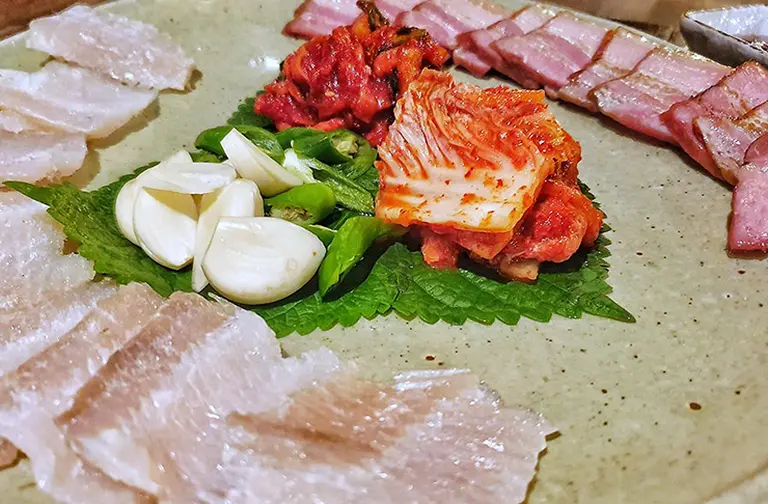
How Is Hongeo Made?
Traditionally, only the most pungent-smelling skate are selected—because the stronger the smell, the more flavorful the final product. After cleaning, the fish is wrapped in rice straw and placed in clay pots to ferment for several days.
In modern times, large-scale fermentation is done in refrigerated facilities with controlled humidity and temperature, ensuring consistency in aroma and texture. Once the skate reaches its peak odor, it’s sliced and served raw, often as Hongeo Samhap—a classic trio of skate, boiled pork belly, and aged kimchi, accompanied by garlic, herbs, and ssamjang sauce.
How to Eat Hongeo (Without Running Away)
For beginners, pairing is key. To tame the sharp ammonia sting, Hongeo is usually eaten with fresh greens, garlic, kimchi, and fatty pork belly. This combo balances the flavors and softens the sensory impact. Even so, many first-timers still find themselves grimacing, gagging, or even gasping for air at the first bite.
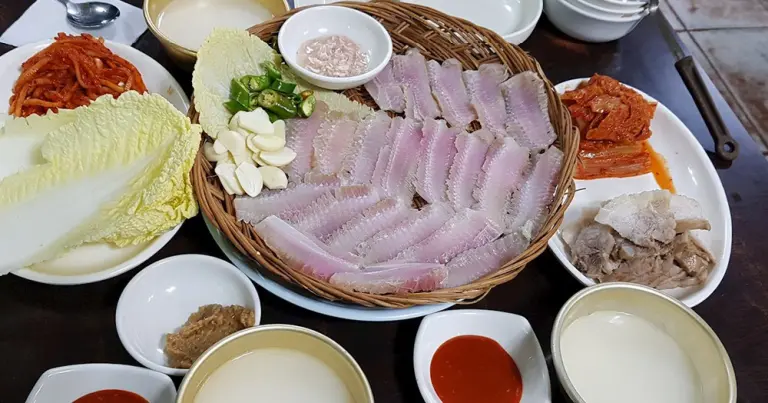
>> Try Korea’s must-eat street snack – Hotteok, the sweet pancake that wins every heart
But don’t be discouraged—those who try it repeatedly often become addicted. The chewy texture, ocean-fresh taste, and crunchy cartilage create a one-of-a-kind experience that’s hard to replicate. Over time, some even grow to crave the kick of Hongeo’s smell.
Why Do People Still Eat This “Stinky Fish”?
Despite (or because of) its overpowering odor, Hongeo is immensely popular in Korea, with around 11,000 tons consumed annually. Numerous restaurants across the country specialize in this pungent delicacy, often boasting different aging methods, pairing techniques, or fermentation secrets.
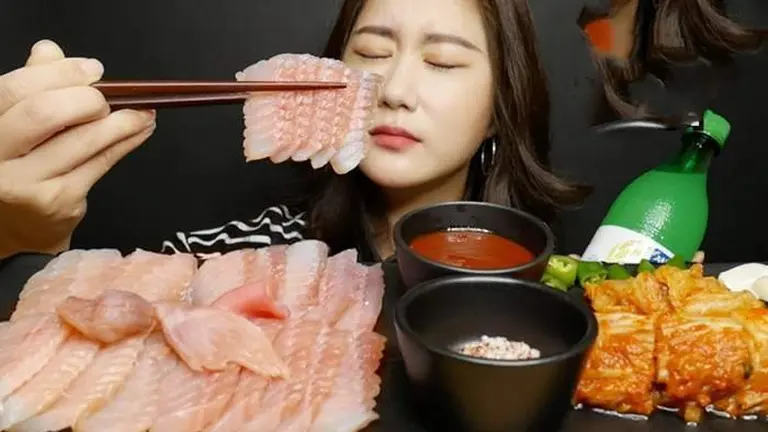
Beyond its cultural value, Hongeo is highly nutritious. Rich in protein, healthy fats, calcium, phosphorus, iron, potassium, and essential vitamins (A, B1, B2, C, and P), it’s particularly beneficial for:
- Urinary tract infections
- Liver conditions
- Bone and joint problems
In traditional Korean medicine, fermented skate is even used as a remedy for issues like blood stasis, chronic pain, and internal heat. Unsurprisingly, it’s especially popular among older men who value its supposed restorative effects.
Would You Dare to Try Hongeo?
While its reputation as the “toilet-smelling fish” might be off-putting, Hongeo continues to win hearts (and noses) across Korea and beyond. It’s a dish that tests the limits of your senses but rewards the brave with a deep, bold flavor that speaks of the sea, of history, and of resilience.
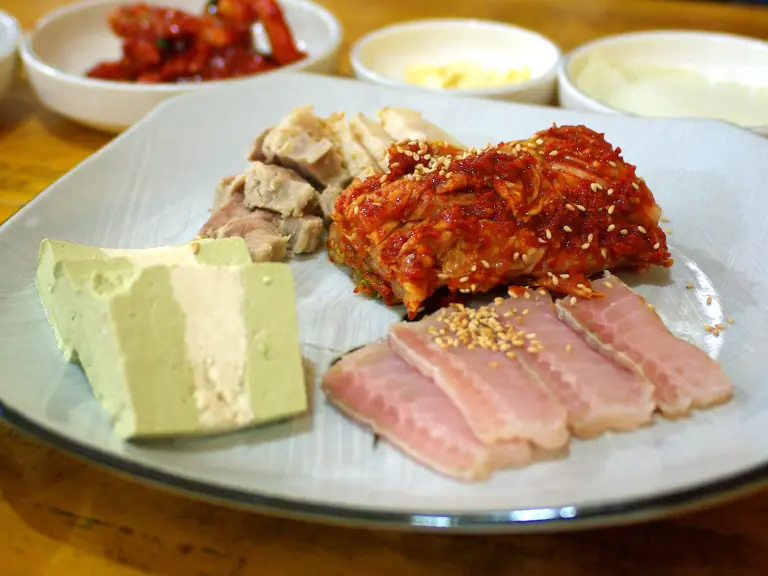
>> Dining etiquette in Korea: Respect comes first and you don’t eat until others do
If you’re ever in Korea and want a truly unforgettable culinary experience, take the plunge. You might just find yourself hooked—nose and all.


